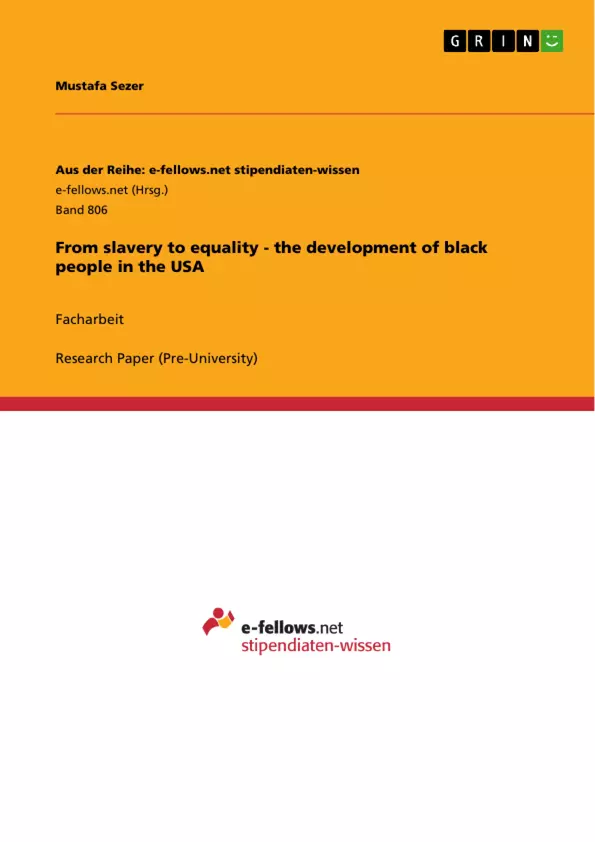Diese Facharbeit beschäftigt sich mit der Entwicklung der Afro-Amerikanischen Menschen in den USA. Unter anderem wird hierin die Entwicklung von schwarzen Sklavenarbeitern bis zur Erlangung der Gleichebereichtigung mithilfe von literarischen und politischen Beispielen (Reden von wichtigen Persönlichkeiten) verdeutlicht und anschließend die Bedeutung dieser Entwicklung für die heutige Zeit herausgearbeitet.
Inhaltsverzeichnis (Table of Contents)
- Introduction
- History of the Afro-American slavery
- Its beginning and the situation of the African slaves
- The abolishment of slavery
- Literary example of the situation of black people in the 20th century "Beale Street Blues"
- Description of the main characters
- The political and social situation of the characters
- Their way out of the problems
- Political measures against discrimination
- Civil-rights activists and their political speeches
- Martin Luther King
- Malcolm X
- Political events
- Civil-rights activists and their political speeches
- Today's situation
- Obama's view of today's situation
- Is there still discrimination in the USA?
- Concluding remark
Zielsetzung und Themenschwerpunkte (Objectives and Key Themes)
This paper aims to analyze the historical development of black people in the USA from slavery to their current position in society. It examines the impact of slavery on the African American community and explores how black people have navigated their place in a racially divided society. The paper focuses on the following key themes:- The historical context of Afro-American slavery and its lasting impact on the African American community
- The social and political struggles of black people in the 20th century, as illustrated through the novel "Beale Street Blues"
- The role of civil-rights activists and political events in promoting equality for black people
- The present-day situation of black people in the USA, particularly the question of whether discrimination still persists.
Zusammenfassung der Kapitel (Chapter Summaries)
The first chapter delves into the history of Afro-American slavery, highlighting its origins in the 16th century and the brutal conditions endured by African slaves. It examines the motives behind slavery, including the demand for agricultural products like cotton, and the various forms of oppression experienced by enslaved people.
The second chapter explores the lived experiences of black people in the 20th century through an analysis of James Baldwin's "Beale Street Blues." The chapter focuses on the social and political realities faced by the novel's characters and their attempts to navigate a system riddled with racism and prejudice.
Chapter three examines the role of politicians and civil-rights activists in advancing the cause of equality for black people. The chapter analyzes the speeches of Martin Luther King and Malcolm X, as well as key political events, to assess their impact on the fight against discrimination.
Schlüsselwörter (Keywords)
The key topics and concepts explored in this paper include Afro-American slavery, racial discrimination, social and political struggles of black people, civil rights movements, political activism, equality, and the legacy of racism in the USA.- Arbeit zitieren
- Mustafa Sezer (Autor:in), 2012, From slavery to equality - the development of black people in the USA, München, GRIN Verlag, https://www.grin.com/document/262446



